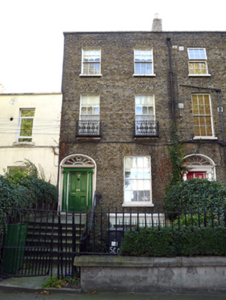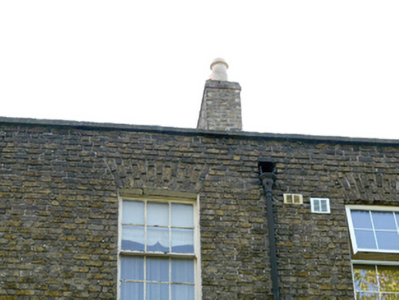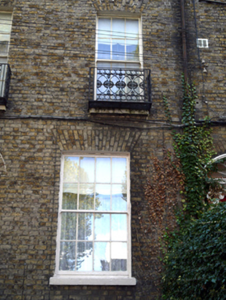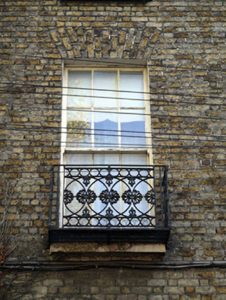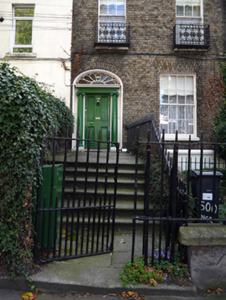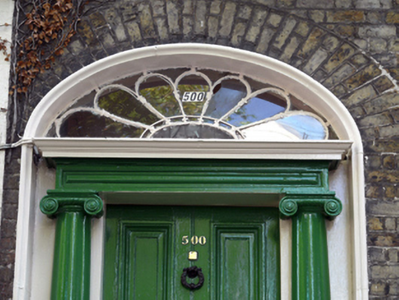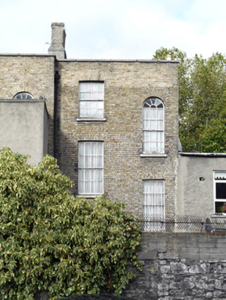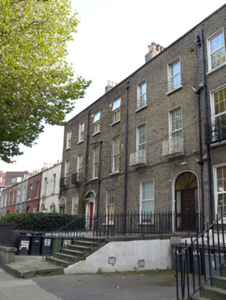Survey Data
Reg No
50011058
Rating
Regional
Categories of Special Interest
Architectural, Artistic
Original Use
House
In Use As
House
Date
1820 - 1840
Coordinates
316131, 235652
Date Recorded
12/10/2011
Date Updated
--/--/--
Description
Terraced two-bay three-storey house over exposed basement, built c.1830, as one of terrace of four similar houses. M-profile slate roof, hipped to east end of rear pitch and set behind parapet wall with granite coping and shared cast-iron hopper and downpipe breaking through to west. Shared stepped chimneystacks to west party wall, yellow brick to front, rendered to rear and further rendered stack rising from east gable, all having clay pots. Yellow brick walls laid in Flemish bond, to front and rear, set on painted granite plinth course to front over rendered walls to basement level. Gauged brick flat-arched window openings with painted reveals, granite sills and early replacement timber sliding sash windows, eight-over-eight pane to basement and ground floor, and six-over-six pane to first and second floors. Decorative cast-iron balconettes to first floor and cast-iron grille to basement. Timber sliding sash windows to rear elevation, with round-headed opening to stairs. Gauged brick segmental-headed door opening with moulded surround and painted masonry Ionic doorcase. Original flat-panelled timber door flanked by engaged Ionic columns on plinth blocks supporting panelled lintel cornice and original petal fanlight. Door opens onto extended granite platform with cast-iron bootscraper and six nosed granite steps enclosed by original wrought-iron railing. Front garden enclosed to street by original wrought-iron railing on low rendered wall with granite coping and matching pedestrian gate. Rear site enclosed by tall rubble stone wall raised in concrete block.
Appraisal
The North Circular Road was laid out in 1763, and gradually developed over the next one hundred years. An Act of that year called for the making of more convenient approaches to the city. It was partly financed by toll gates located at Phoenix Park, Aughrim Street, Phibsborough and Dorset Street. It became a fashionable carriage promenade in the 1780s. This terraced brick house, which appears to be still in single occupancy, forms part of a terrace of four similar houses as part of a greater terrace of varying house types. This section of the street remained largely undeveloped until the Victorian period, with this terrace predating most houses on the street. Retaining all external elements including its railings and original platform and steps, and timber sash windows, with decorative balconettes to the first floor, this house is one of the most intact on the street and greatly enhances the genteel residential charm that once characterized the area.

